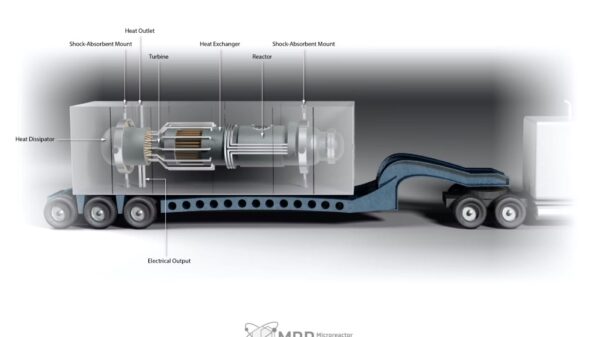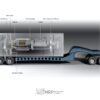The U.S. Navy awarded Lockheed Martin (NYSE: LMT) a $2 billion contract to integrate the Conventional Prompt Strike (CPS) hypersonic weapons system onto ZUMWALT-class guided missile destroyers (DDGs).
CPS is a hypersonic boost-glide weapon system that allows for long range missile flight at speeds in excess of Mach 5. It also possesses a high survivability against enemy defenses.
Hypersonic vehicles or hypersonic weapons can travel faster than five times the speed of sound and are highly maneuverable. Combining the CPS with the stealth and mobility of the ZUMWALT-class destroyer will deliver the Navy hypersonic strike capability.
“Lockheed Martin continues to advance hypersonic strike capability for the United States through this new contract,” said Steve Layne, vice president of hypersonic strike weapon systems at Lockheed Martin.
“Early design work is already underway. Our team looks forward to supporting the warfighter by providing more options to further protect America at sea.”
Lockheed will provide launcher systems, weapon control, All Up Rounds (AURs), which are integrated missile components, and platform integration support for this platform. The company, with assistance from subcontractors Northrop Grumman (NYSE: NOC) and General Dynamics Mission Systems (NYSE: GD), is presently on track to provide CPS surface-launched sea-based hypersonic strike capability to the Navy by the mid-2020s.
Presently, Russia, China and the United States have hypersonic weapons capabilities, and North Korea has claimed to have tested one.
Read more: Raytheon Technologies demonstrates command and control tech for U.S. Army
Read more: Lockheed Martin and Microsoft join forces to improve Department of Defense tech
Hypersonic weapons are a national security imperative: CTO
“While we were fighting the war on terror for the last twenty years, our adversaries have been investing and so we’ve got to catch up,” said Eric Scherff, VP of advanced programs hypersonic strike in an interview with Steve Walker, Lockheed Martin’s chief technology officer in an interview.
“We have to get back to the capability parity that’s necessary to hold them at risk, and likewise, if necessary engage with the kinds of speed and capability that hypersonic strike brings to bring to a quick end any kind of conflict.”
Hypersonic weapons are fast, low-flying and highly maneuverable weapons that are too agile to be countered by missile defense systems.
They differ from traditional ballistic missiles because they don’t follow a predetermined, arched trajectory. Also they can can maneuver as required on the way to their destination, according to the Congressional Research Service.














